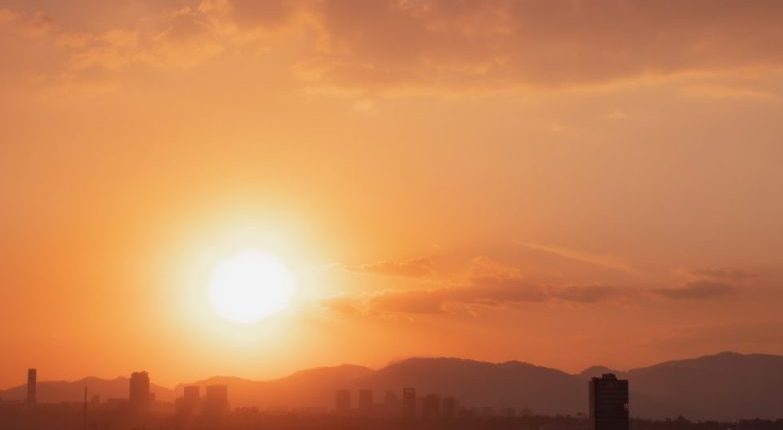Building a Future Where Cities are Resilient to Extreme Heat
The Impact of Extreme Heat on Urban Areas
Climate change has meant hotter and hotter temperatures across the globe and a succession of world records, with 2020 and 2016 being two of the hottest years since records began. in fact, summer temperatures recorded over the last 7 years have been consistently high and experts say that 2021 is likely to continue this trend (WHO, 2021). This is most tangibly felt during the heatwaves experienced in multiple locations worldwide. For example, some parts of India reached 47.5ºC in the summer of 2020. Between June and July 2021 Canada experienced debilitating temperatures of up to 49.6 ºC and in June 2017 Kuwait experienced temperatures as high as 54 ºC (Independent, 2017).
As heatwaves become the norm rather than the exception, the impact of extreme heat on development and human life has become a growing concern. Research is now uncovering how heat can exacerbate drought, impact agriculture, increase the risk of wildfire, and impact food security. Further research is also being directed to how heat increases the risk of cardiovascular and respiratory complications as well as kidney disease. Certain people groups, such as those on extremely low incomes, are particularly vulnerable to heat stress and related illness. Heat stress is where the body becomes unable to cool itself. Those on low incomes have less access to cooling activities that could otherwise save their life. This reality is particularly evident in poor urban areas within lower-income countries. Poor urban areas are not designed to deal with heatwaves and also have reduced access to health infrastructure. How cities can become more resilient to growing temperatures is therefore closely linked to the development of poor urban areas.
Urban Heat Islands – Why are Cities so Vulnerable to Extreme Heat
Cities have not been built to mitigate against climate change, rather urban planning has been focused on how to efficiently use the space to accommodate high-density populations. Such cities often function in a way that traps rather than dispels heat creating what is termed as “urban heat islands”. Urban heat islands are phenomena where urban areas become much hotter than surrounding rural areas. This is because a higher population density produces more heat via human activity, whilst space-saving constructions such as skyscrapers work to trap this heat into the urban space. The result is a heat bubble that is impossible to escape from unless you leave the city. Hotter cities produce more heat-related illnesses or casualties.. Sustainable development and the protection of vulnerable groups against heat-related illnesses require an adjustment to the urban environment. But redesigning cities to be resilient towards heat waves is a huge and costly undertaking that takes years to implement. In the interim, city governments and local organisation in countries such as India have stepped in to carry out life-saving projects.
The ‘Cool Roof’ Project Saves lives in Ahmedabad, India
A city that was well ahead of the curve is Ahmedabad in India, now a leading city in building resilience against extreme heat. In Ahmedabad’ city where buildings have been densely built together, retrofitting buildings for climate adaption is limited. However, in 2017 Ahmedabad’s city government launched a city-wide initiative to provide affordable cooling for Ahmedabad’s urban poor through its ‘Cool Roofs’ project. Cool roofs are highly reflective surfaces, often made by using white paint, which minimises heat absorption. Studies have shown that cool roofs can reduce indoor temperatures by 3-5 ºC (NRDC, 2017) which when used on a city-wide scale can reduce the urban heat island effect. Ahmedabad has consistently applied this initiative and is currently on track to paint a further 15,000 roofs by the end of 2021 (Cool Coalition, 2021). The ‘Cool Roofs’ project is attached to other schemes under Ahmedabad’s ‘Heat Action Plan’. The ‘Heat Action Plan’ was initially set up in 2013 aiming to protect the most vulnerable from the heat by establishing a comprehensive early warning system that helps vulnerable populations prepare and protect themselves from the heat. In tandem with city adaptions such as the ‘Cool Roofs project’ Ahmedabad has consistently managed to keep heat-related deaths low and its action plan is now emulated in multiple other cities across India.
International Programmes Aimed at Designing Heat Resilient Cities
Developing alongside national-level projects are a number of international initiatives that aim to direct city planning towards design that is climate-sensitive and heat resilient. These include the recently released guide to cooling cities by the UN Environment Programme and several funding projects established in partnership with the World Bank. One particular aspect that is being promoted in future city planning is the passive solutions such as tree planting and planned green spaces. These green spaces act similarly to the idea of ‘Cool Roofs’ in that they are proven to reduce urban temperatures without invasively retrofitting the city landscape. Increasing green spaces has already started in cities such as Melbourne, Australia, and Freetown, Sierra Leone. Freetown ambitiously aims to increase vegetation cover by 50% by the end of 2021.
As heat waves increase in frequency and severity, both interim national projects and dedicated city planning on an international scale are needed to create heat resilient cities that are safe to live in.
Bibliography
UNEP,. (2021) UN issues new guidance to address warming in cities https://www.unep.org/news-and-stories/press-release/un-issues-new-guidance-address-warming-cities
NRDC International ,. (2021) EXPANDING HEAT RESILIENCE ACROSS INDIA: HEAT ACTION PLAN HIGHLIGHTS https://www.nrdc.org/sites/default/files/india-heat-resilient-cities-ib.pdf
UNEP,. (28th January 2021) Cool Roofs: Community-Led Initiatives in Four Indian Cities https://coolcoalition.org/cool-roofs-community-led-initiatives-in-four-indian-cities/
WMO,. (31st October 2021) State of Climate in 2021: Extreme events and major impacts https://public.wmo.int/en/media/press-release/state-of-climate-2021-extreme-events-and-major-impacts
Shaikh, T,. Kuwait swelters in 54C heat https://www.independent.co.uk/news/world/middle-east/kuwait-swelters-record-breaking-54c-heatwave-weather-7152911.html
Worley,W,. (11th November 2021) Extreme heat: The climate disaster that needs more attention https://www.devex.com/news/extreme-heat-the-climate-disaster-that-needs-more-attention-102054
Igoe, M,. (11th November) The uncounted climate change casualties https://www.devex.com/news/devex-newswire-the-uncounted-climate-change-casualties-102066

